14 Nights Bodrum Yacht Charter Itinerary
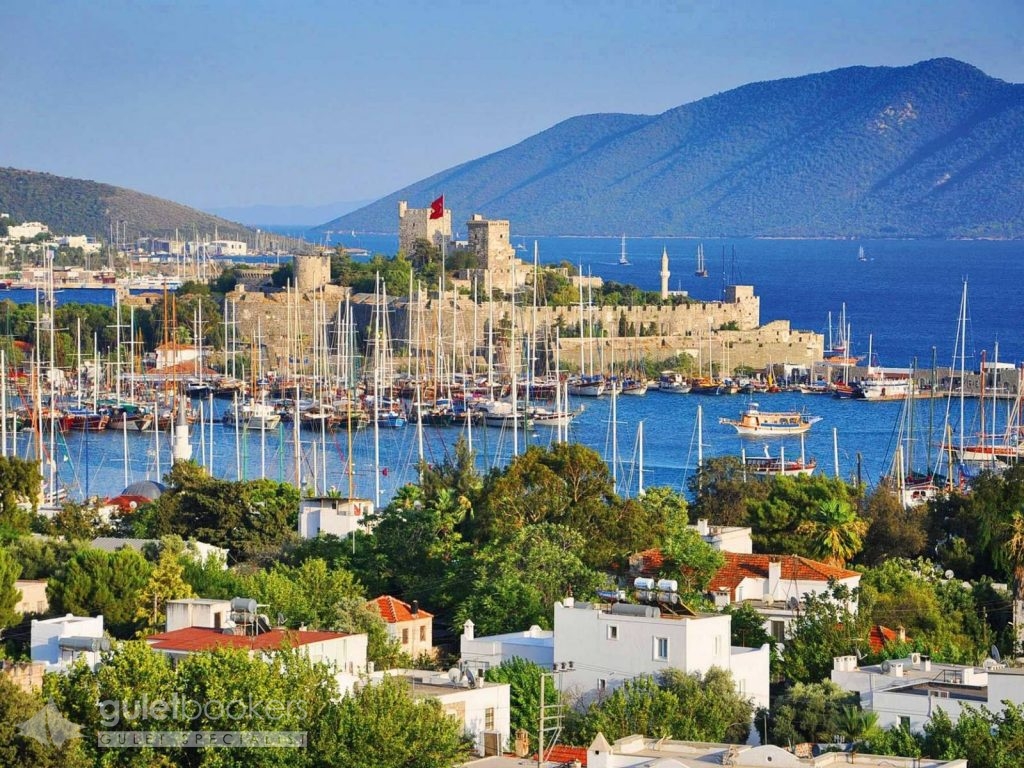
Bodrum has a history that goes back to the 12 th century B.C. The city which was called ‘Halicarnassus’ was the birthplace of Herodotus; the ‘Father of History’ who lived in the 5th century B.C. The ‘Mausoleum’ of King Mausolus (350 B.C.) which is one of the Seven Wonders of the World is in this city. The only structure that survived from the Classical Era is the Amphitheatre. Another place that you should visit when you arrive in Bodrum is the landmark of the city ‘Castle of Saint Peter’. It is one of the best preserved piece of work whose history goes back to the Middle Ages.
Bodrum Harbour is 20 minutes from Bodrum- Milas (BJV) International Airport. Besides its wealth of history, Bodrum is also famous for its nature, crystal and clean beaches and nightlife.
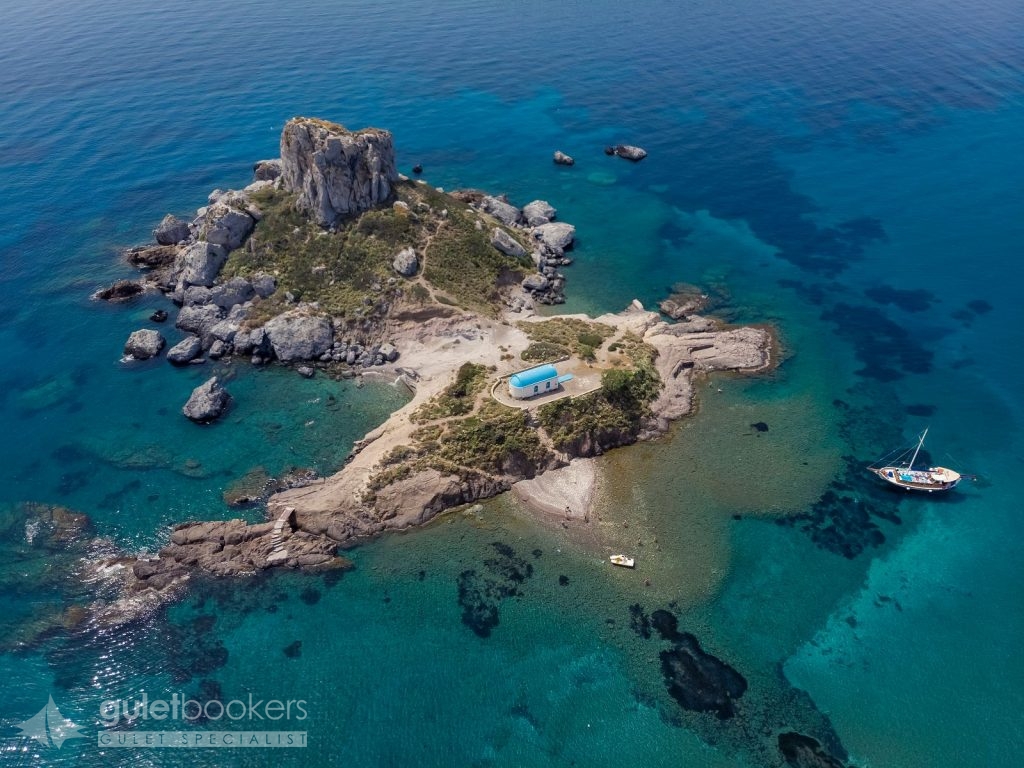
Endless beaches with turquoise waters; lush vegatation and abundantly flowing streams; ancient and medieval monuments; grand edifices of Italian architecture all come to spell one word: Kos, the third largest island of the Dodecanese Group, only 4 miles away from the coast of Turkey. It is said that the island was named after the daughter of Merops, an ancient king – according to legend – who was also known as Koos. It is the birthplace of Hippocrates, the “Father of Medicine” (460-377 BC). It has been populated since neolithic times (5th-4th millenium BC). In the 14th c., the Knights Hospitaller of the Order of St John took over the island, strengthened the fortifications of older castles and built new ones. During the Turkish Occupation, the island suffered onslaughts by many invaders (the Knights, the Venetians, etc.). A number of monumental public buildings were constructed during the Italian rule (1912-1945). The island was integrated in Greece in 1948.
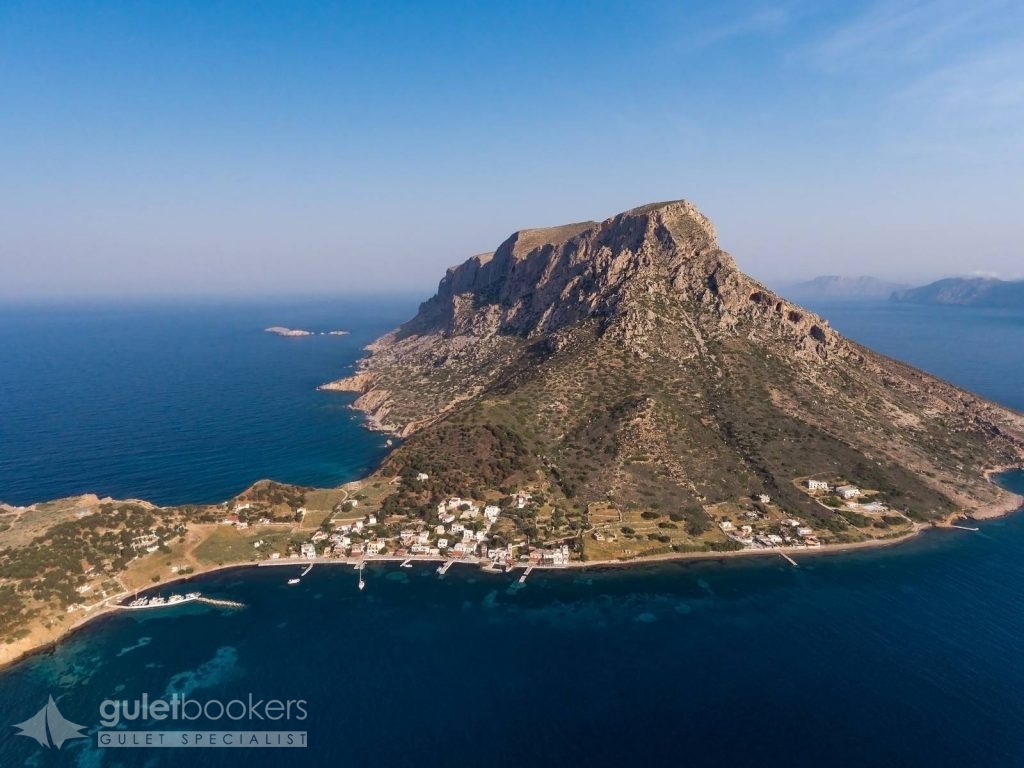
Telendos is a tiny island of serene beauty that located nort western coast of Kalymnos. It covers an area of 5 sq. km, lying barely 700 m. W of Myrties village in Kalymnos and there are 60 residents. In antiquity and up to the middle of the 6th century AD, Telendos was part of Kalymnos. It is estimated that the ancient Mesos dimos [Middle Town] was located in the sea area between Kalymnos and Telendos. In 554 AD, a devastating earthquake caused ground subsidence, the destruction of settlements and resulted in sinking the area between Kalymnos and Telendos into the sea. Telendos thrived during the early Christian period (4th-7th c.). There is only one small village on the island and it is built opposite the Kalymnos-Telendos strait. There is a beautiful pine forest on the south part of the island, next to ruins of Byzantine houses (Tholoi). Make sure you visit Ai Giorgis chapel, you will enjoy a lovely sunset view; also the early-Christian necropolis; and the castle of Agios Konstantinos. Go for a swim in Chochlakas, Plaka, Potha, and Paradise; scuba diving fans are welcome to explore the ancient town sunk between Kalymnos and Telendos, while others may opt for hiking, climbing, or spear fishing. Small boats make runs to Myrties cove, Kalymnos.
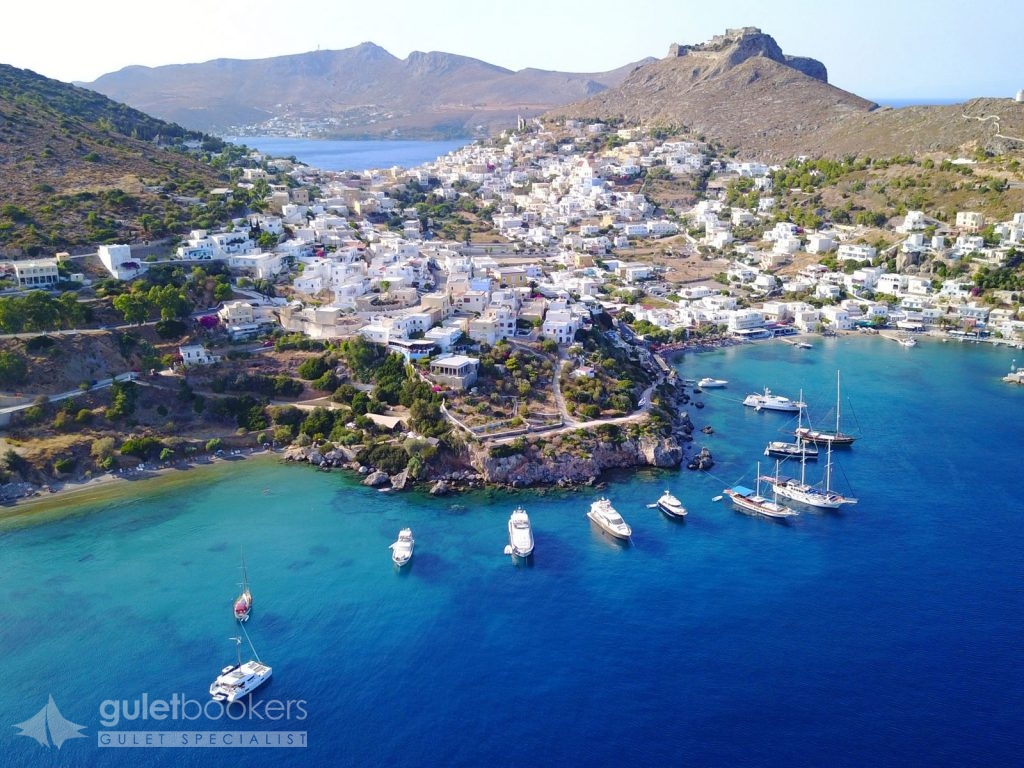
According to Greek mythology, Leros was considered as the island of Artemis, the goddess of forests and hunting. It is an ideal place for quiet holidays. The houses, built in the Italian architectural style, catch the eye. Take your pick among the beaches of crystal-clear waters and visit the towering castle of Panagia on Apityki hill. Coves protected from the elements, hills, large expanses of pine trees and olive groves, and low plains with freshwater streams complete the picture. The history of Leros begins in Neolithic times. In antiquity, the island was an Ionian settlement. In early Christian times (5th-7th c.) settlements began to spread along the coastline. The island was occupied by the Knights Hospitaller of the Order of St John from 1309 to 1522, when it was conquered by the Turks. In 1912, the island came under the Italian rule. The Italians took full advantage of the island’s strategic position and natural harbour. Leros was typically integrated in Greece in 1948. During the Civil War and in the years of dictatorship (1967-1974), Leros used to be a place of exile.
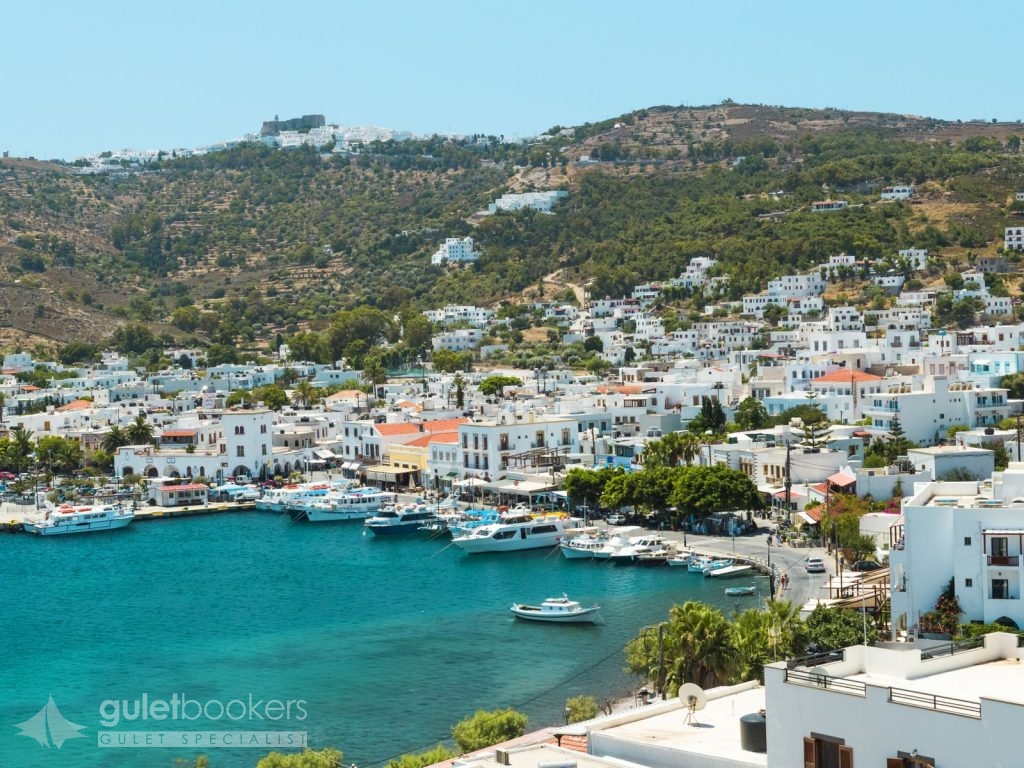
Patmos is known as the “island of the Apocalypse” or “Jerusalem of the Aegean”: John the Theologian, one of Christ’s disciples, exiled to this island by the Roman emperor Domitian in 95 AD, wrote the “Book of Revelation”, the last book of the New Testament in one of the island’s caves. The “Cave of the Apocalypse”, as it is known today, is one of the most historic and impressive sites in Greece. Patmos was first inhabited in prehistoric times. During the Roman times it was a place of exile. In 1088, the Blessed Christodoulos founded the Monastery of St John the Theologian. Over time the island flourished and the first mansions were built in the late 16th century. The Patmos Seminary (or Patmian School) was built in 1713. The island officially became Greek territory in 1948.
This small traditional town has been built around the monastery of Saint John the Theologian. It is one of the most beautiful and well preserved medieval towns found in the Aegean. The houses, built next to each other, have their windows placed high and leave room for narrow, mazelike paved alleys where you will find dozens of 15th-17th century churches, built with stone from Petrokopio (meaning stone quarry) and Manolakas. The roofs are made with timber from cypress trees and alternating layers of astivi (a kind of shrub endemic to Patmos), seaweed, and mud.
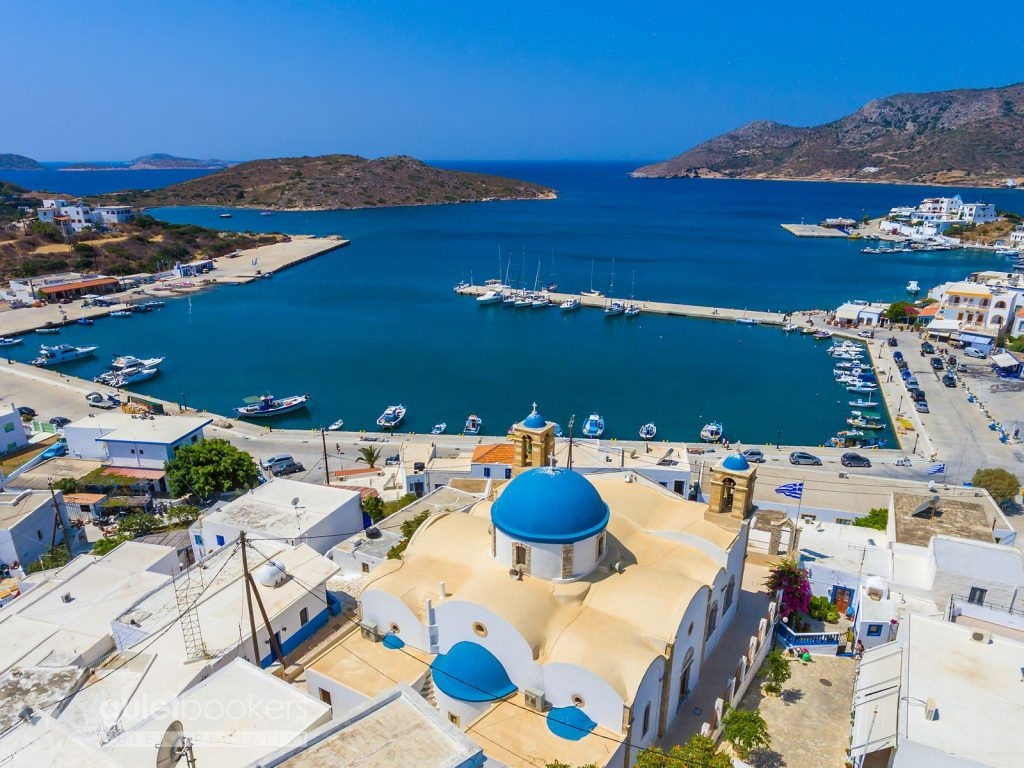
Leipsoi is the ideal island for a relaxed vacation: the nature and the locals have a unique way of helping visitors acquire a much needed inner peace. This is why locals say that it was probably this land, and not Calypso herself, that lured Odysseus into staying there when his ship strayed from the course set for his return to Ithaca.
Leipsoi is part of the northern Dodecanese. It is the largest island in a group of twenty islands and islets of enormous environmental value, as they are included in the Natura Networking Programme. They lie between Patmos and Leros and have been inhabited since prehistoric times. Leipsoi village was founded in 1669 by a man from Crete by the name of Elias. Leipsoi Island was integrated in Greece in 1948.
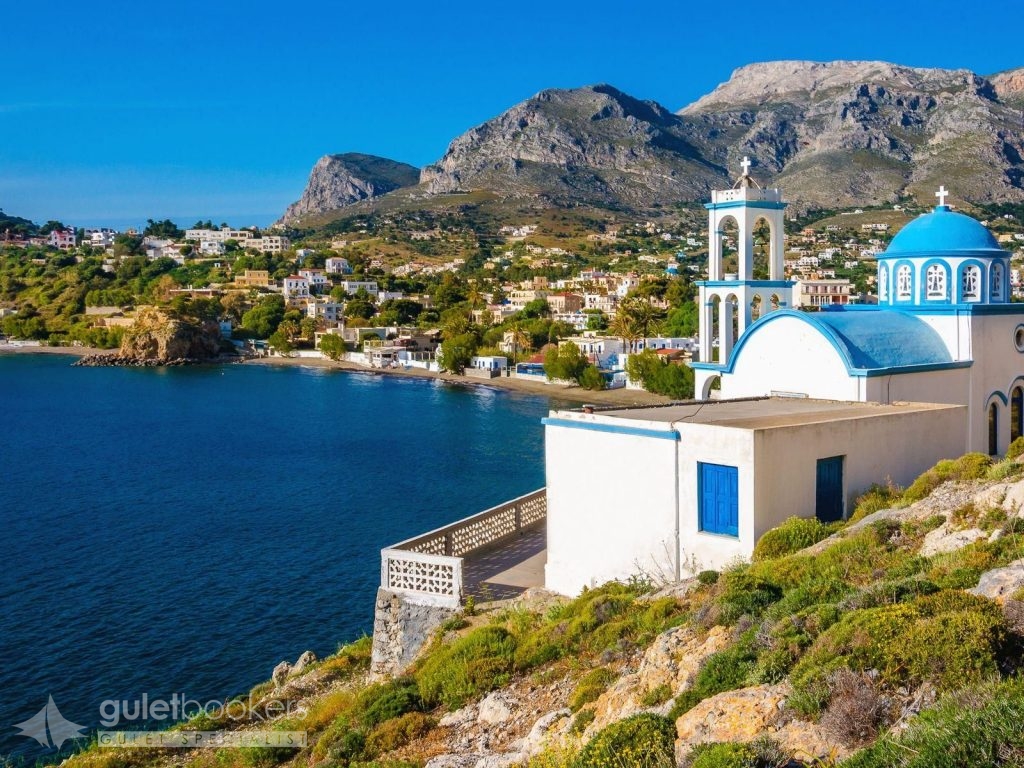
Kalymnos is the fourth largest island of the Dodecanese Group. It has often been called the “island of the sea sponge harvesters” due to the growth of the Greek sponge-harvesting trade in the 19th century. After WWII, Kalymnos remained the only Greek island engaged in the sea sponge-harvesting activity, supplying domestic as well as foreign markets and consequently making Kalymnos known as “the island of sponge harvesters” to the present day. In antiquity, Kalymnos and Leros were known as the Calydnae Islands. The first inhabitants of Kalymnos are said to have been the Kares from Asia Minor. In 1306 it was conquered by the Knights Hospitaller of Rhodes, who remained on Kalymnos until 1522 when the Turks occupied the island. The Italians took over in 1912 and in 1948 it was integrated in Greece. Today it is a tourist destination known worldwide for offering alternative-style vacations and activities such as climbing, scuba diving, mountain hiking and spelunking.
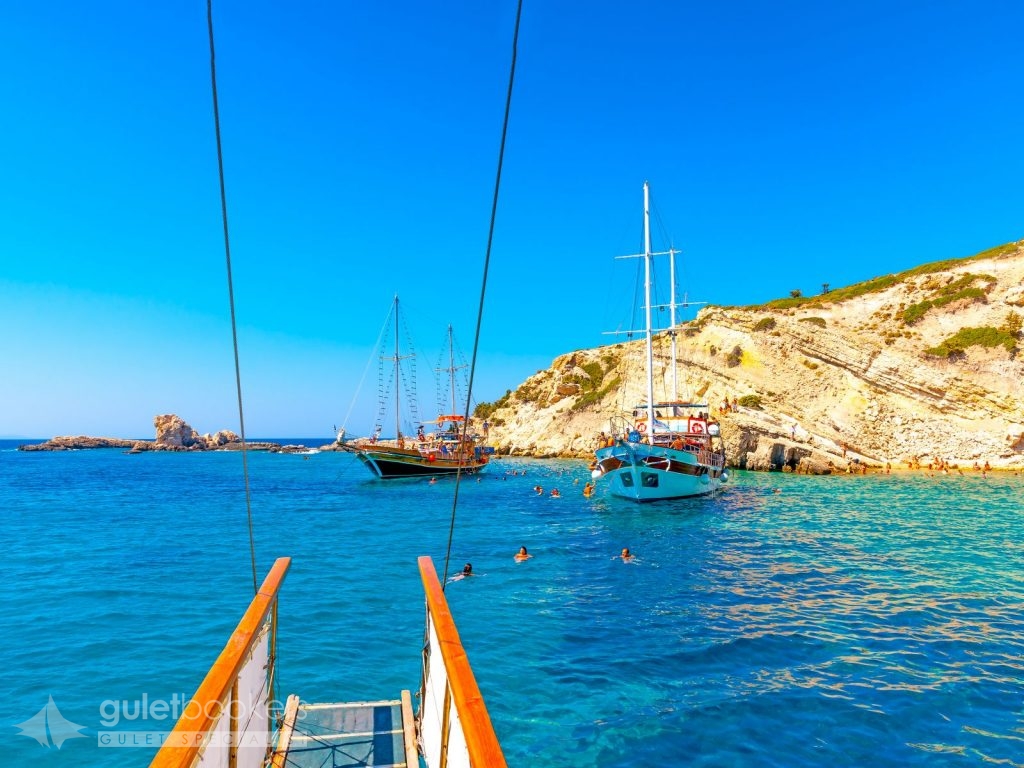
Pserimos has a 15 sq. km area and a population of approximately 150. This island offers the opportunity for a truly quiet vacation. Excavations have revealed ruins of an ancient settlement; certain archeologists consider it to have been the ancient dimos [town] of Perraiotan. Platy islet lies to the west; a segment of it is a rocky isle known as Nekrothiki. All of Pserimos’ beaches are good for swimming while the beach in Vathys cove is the best by far.
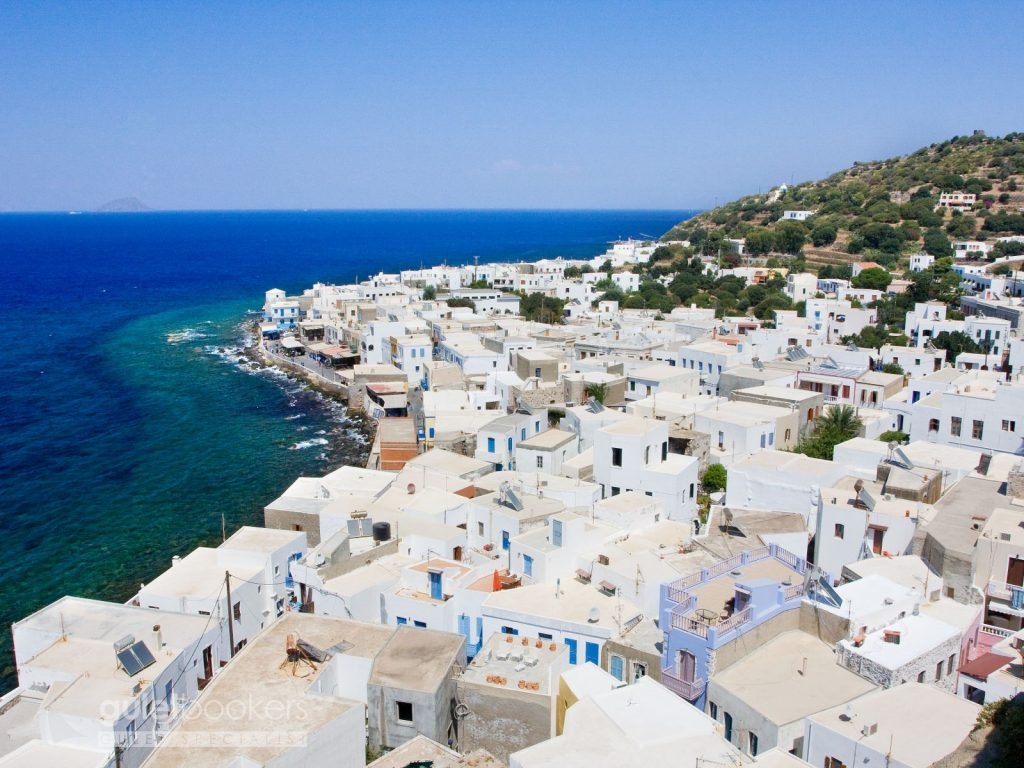
Nisyros is one of the most beautiful Aegean Islands, yet untouched by tourism growth. According to Mythology, the island was created during the Gigantomachy, the battle between the Giants and the Gods. During that battle, Poseidon pursued the Giant Polyvotis to Kos, cut off a piece of the island and hurled it onto the Giant, thus sinking him into the Aegean Sea for eternity. That legendary piece of rock is Nisyros and the eruptions of its volcano are the wrathful breathing of the defeated Giant. Nisyros island was created from these volcanic eruptions making it the “newest” of Greece’s volcanic centres and still an active one – along with the volcanic centres at Milos, Santorini, and Methana. In antiquity, Nisyros had a thriving trade in obsidian which the island’s inhabitants would extract from the nearby island of Gyali.
Beatiful Mandraki is the island’s capital town and port. Its squares feature amazing pebbled paving, and the narrow alleys are flanked by white or coloured two-storey houses with wooden balconies. The houses have been built using volcanic rock and have been insulated with pumice. The volcano is remarkable to see when you arrive to the island. You can walk in the caldera and watch the bubbling steam vents. At the caldera’s bottom there are ten craters in very good condition, each with its own name. The largest and most impressive one is called “Stefanos”. It has an elliptic shape; its longest axis reaches 330 m and the shortest one is 260 m long, while its depth goes down to 27 m. The volcano forms a valley (caldera) that is 2,400 metres long and 950 metres wide.
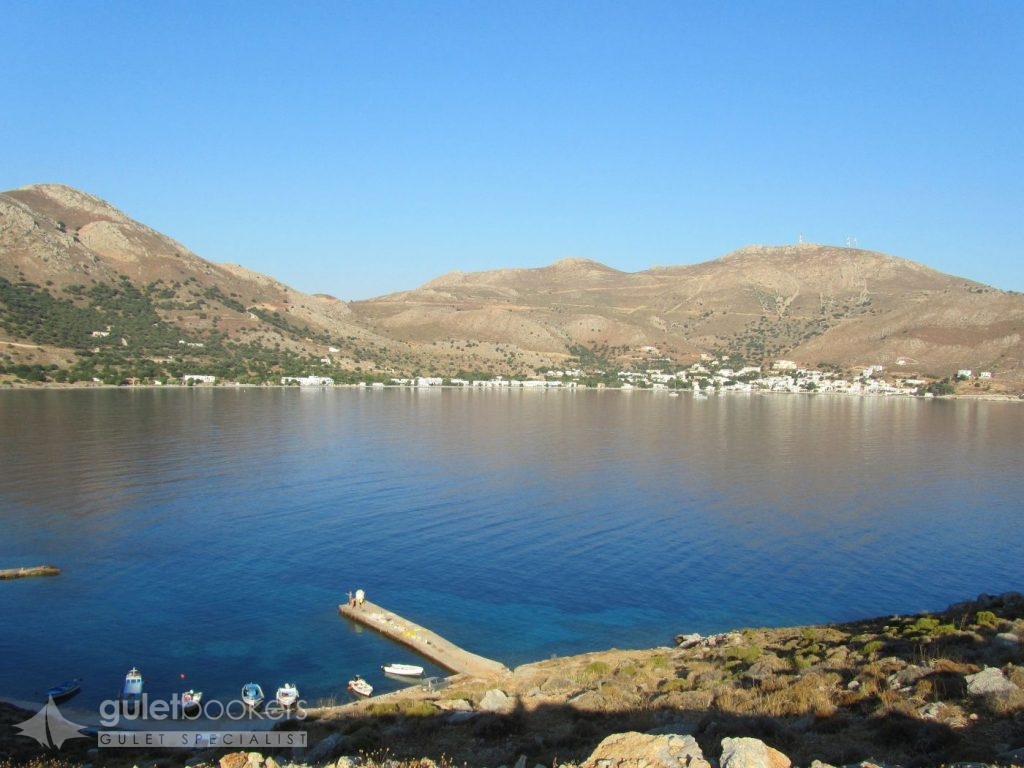
The ragged, mountainous terrain of Tilos; its densely forested ranges; its hilly vistas; and its verdant valleys, are home to four hundred species of flowers and herbs and the habitat of rare species of birds such as Bonelli’s eagles, hawks, nightingales, goldfinches, herons and bee-eaters. You will find picturesque villages and fascinating beaches. The last elephants on Europe lived here. The dwarf elephants made their appearance on the island 45,000 years ago and became extinct approximately 4,000 ago. The entire island is a huge ecological park and is protected by the relevant international treaties. In antiquity, Tilos was renowned for its herbs. It rose to prominence during the ancient classical times, the period when Irinna, a famous ancient poetess, lived on the island. Megalo Chorio is the island’s capital, 7 km NW of the harbour. Stone houses built according to the island’s unaffected traditional architecture make this small town stand out. Strolls along the narrow alleys are a pleasant pastime. The medieval castle has been built on the location of ancient Tilos town at the top of the hill.
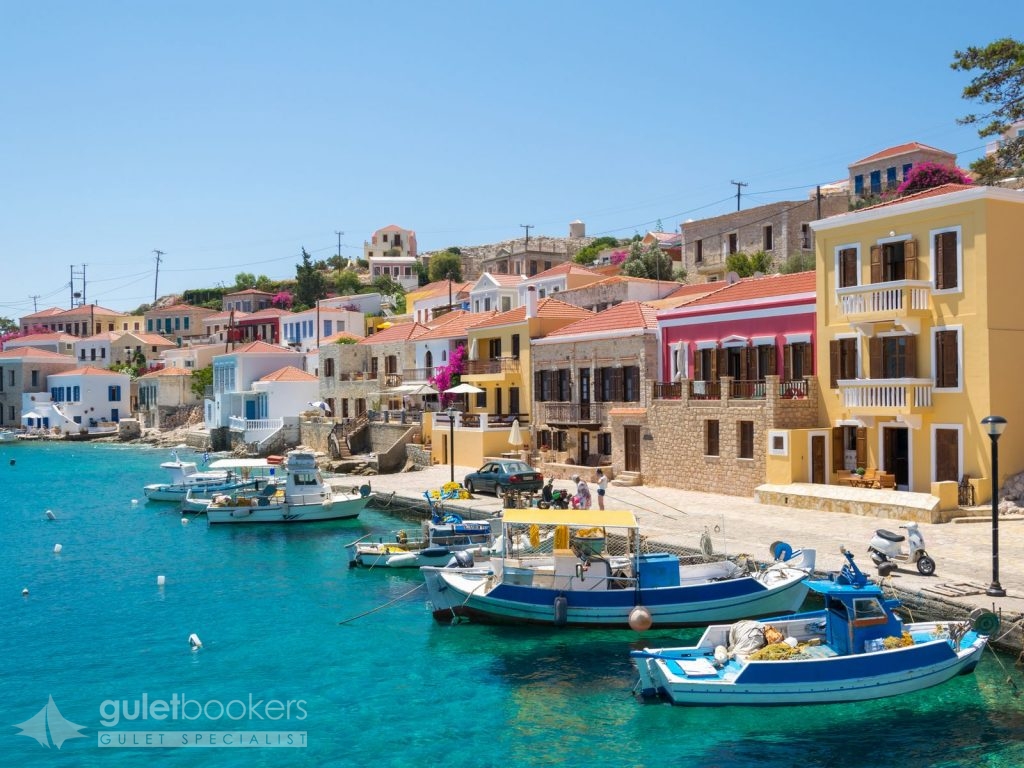
Chalki has been named after the copper (chalkos) mines that used to exist on the island. As of 1983 it has been known worldwide as the “Island of Peace and Friendship” for the young; it offers an enjoyable stay in an enviable serene setting. Chalki prospered in the late 19th century when the islanders became engaged in shipping and the sea sponge trade. Chalki shared the historical path of Rhodes and the island was integrated in the Greek state in 1948. Nimporio is the island’s capital town and has been built in an amphitheatre-like manner, overlooking the crystal-clear blue sea. It keeps a stately beauty, evident in the picturesque alleys and the singular architectural features that adorn the houses; it is one of the most beautiful neoclassical towns in Greece! Chorio used to be the island’s old capital and it was built next to the mighty castle of the Knights Hospitaller of the Order of St John for protection against the pirates. Once the pirate threat had been removed, the locals founded Chalki town or Nimporio (1850-1870) and built magnificent mansions; the latter manifest today the island’s past prosperity times. Chalki has been listed as a heritage town.
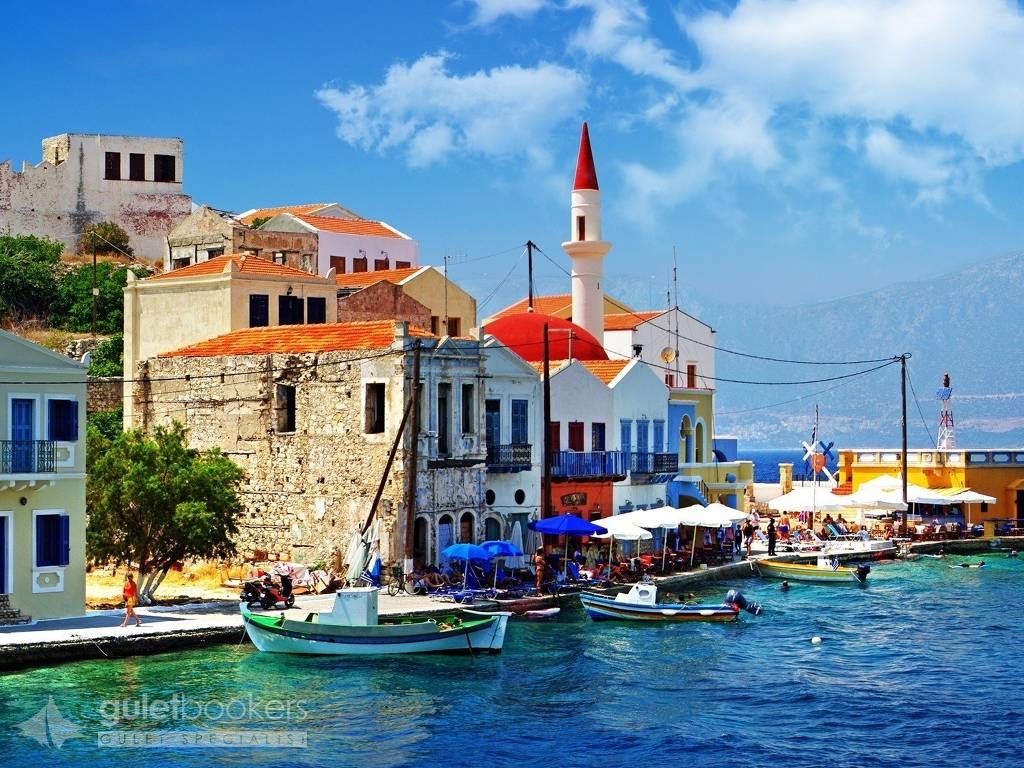
Rhodes is the fourth largest island in Greece, after Crete, Evoia and Lesvos. Endless stretches of coastline and pine forests on mountains dotted with villages, archeological sites, and a medieval city of exceptional beauty attract over a million tourists every year.
Rhodes is the largest of the Dodecanese Group with an area of 1,398 sq. km, a coastline that reaches 220 km. It has been populated since prehistoric times and flourished during the Mycenaean period. It enjoyed great prosperity in the 4th c. BC when the Colossus of Rhodes was erected, a work of art by Chares from Lindos, Rhodes, a disciple of the sculptor Lysippos. After the destructive earthquake in 155 AD, Rhodes knew many conquerors (Persians, Arabs, Saracens and Selzuk Turks). In 1309, the Knights Hospitaller [Order of the Knights of Rhodes] acquired the island and restored the castle adding fortifications that were unmatched in Europe at the time. This castle remained the seat of the Knights until 1522 when the Turks conquered it after tough fights. In 1912, Rhodes became occupied by the Italians until 1948, when Dodecanese became integrated in the Greek state.
The capital of the island is considered to be one of the most beautiful cities worldwide. It was founded in 408 BC. Its medieval architectural features blend with the modern style in buildings. The city comprises the old, fortified medieval town and the modern one, with its old, neoclassical buildings and other recent structures. The medieval town is a UNESCO World Heritage Monument and has been built in a semi-circular fashion around the central harbour.

Panormitis is located South area of the Symi island.Many people come to Symi to worship before the wonder-working icon of Archangel Michael that is covered in silver and gold. It is kept at the monastery of Taxiarchis Michail Panormitis, one of the most significant monasteries in the Dodecanese, built in the nook of Panormos bay. There is an imposing multi-coloured belfry at its entrance, erected in 1911. The monastery’s church was built in 1783. It is a single-naved spacious basilica with rare 18th-century murals, cross vaults, and an elaborate woodcarved iconostasis dating back to 1787.
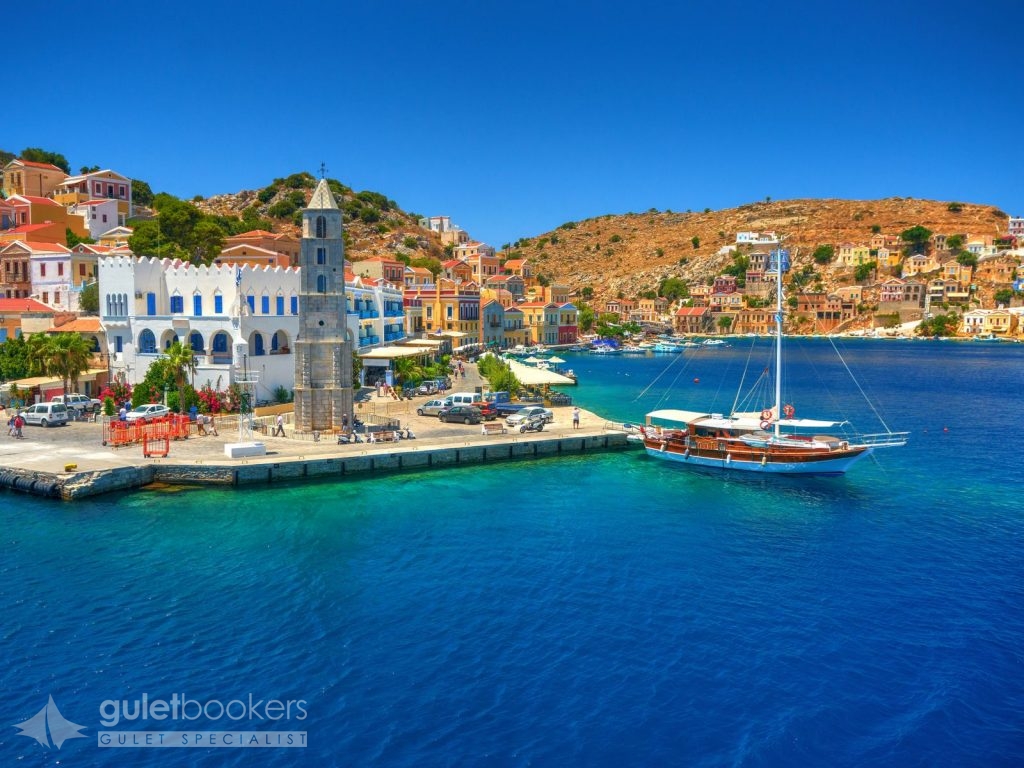
Symi is a cosmopolitan island that has one of the biggest and most beautiful neoclassical towns in the whole country. It boasts a rich tradition in myths as it was first inhabited in the prehistoric times. King Nireas became a legend as he participated in the Trojan War. The locals became engaged in sea sponge harvesting and shipbilding and that is why during the Turkish Occupation (since 1522) the islanders secured firmans of preferential treatment from the Sultan. This is when the School of Agia Marina and Aigli Reading Room were founded. The 19th century is the period of great prosperity for the island when its population had reached 25,000. In 1945, the treaty for the Dodecanese surrender to the Allied Forces was signed on the island. Symi was integrated in Greece in 1948.
The capital town is divided into two large districts. Gialos is the port of the island that never fails to impress visitors with its magnificent neoclassical multi-coloured buildings next to the sea and on the hills and Chorio, the other district, is the larger of the two. Apart from the approximately 3-kilometre asphalted road that connects Gialos and Chorio there is also Kali Strata: 500 wide stone steps climbing uphill and connecting the two districts. Kali Strata is flanked by the largest mansions in Symi.
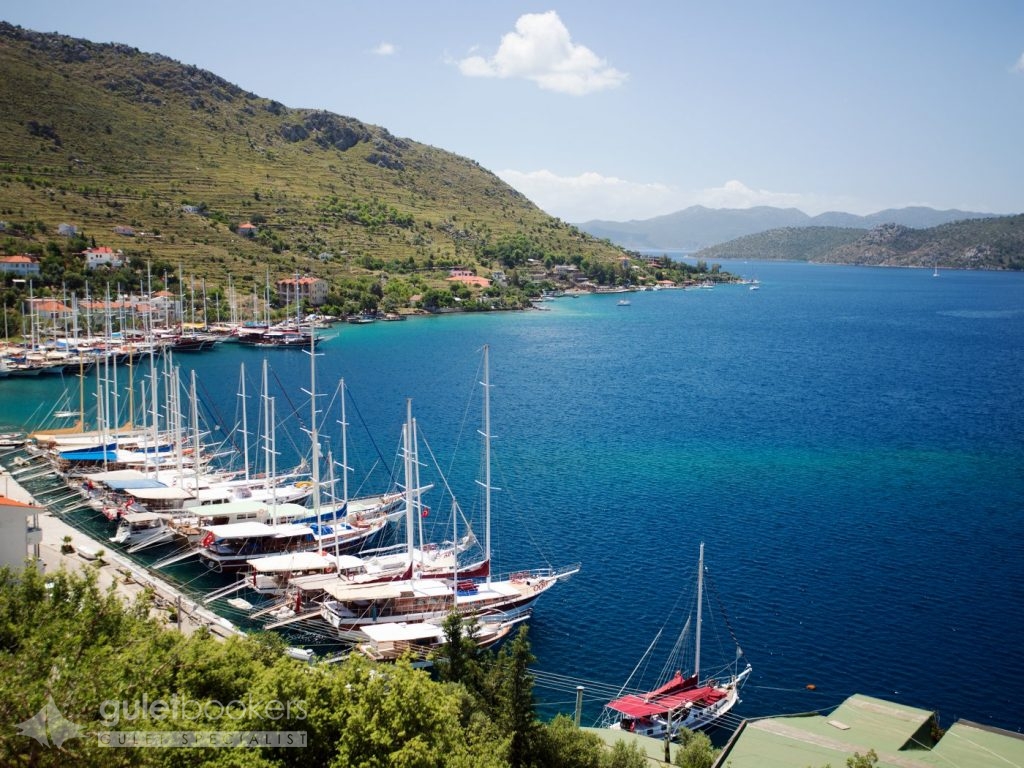
An other place in Hisaronu, named Bozburun is well known to Captains. In respect to tourism it is one of the most virgin parts of the region. Just like the coral waters of the tropical seas, the waters here turn into turquoise fromdark blue. It is highly recommended for those who want a quite and calm holiday. Nearby to Bozburun on Asar Hill are the remains of the ancient city of Larymna. It takes 45 minutes to get to the top of the hill. There are fragments of the city walls, pieces and ruins of tombs scattered around. Bozburun looks beautiful from this hilltop. Another port when you travel towards Bozburun is Sogut Port. The Saranda district of the village of Sogut is in this bay. In order to be able to watch the sunset over the island of Sombeki (Symi/Greece), you should anchor in one of the coves of Kiseli Island.
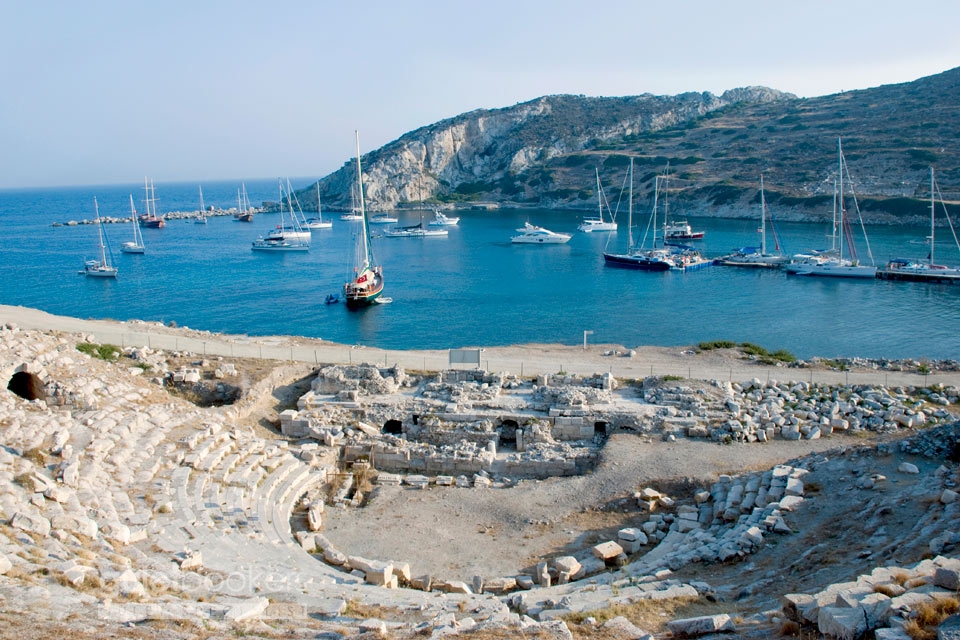
The ancient city of Knidos has the most impressive ruins on the Datca Peninsula. The solitary ruins of Knidos are scattered about the slopes above the ancient harbour. The setting is delightful and the ruins, only partly excavated, are a romantic overgrown jumble of huge rock blocks and pottery sherds. This was one of the Dorian hexapolis, the six cities of the Dorian Confederacy. The city was a prosperous one, its inhabitants being industrious and the harbour well placed to handle passing trade.
Knidos was renowned for two things: its statue of Aphrodite and the scientist Eudoxos. The statue of Aphrodite was Praxiteles, one of the greatest Greek sculptors. In the 4th century B.C., the statue was one of the first of a naked woman, only male statues being naked until this time.
The sexy Aphrodite was believed to bring good fortune to seafarers-it certainly brought large number of tourists in this early age to view it. The scientist, Eudoxos of Knidos, was an astronomer and mathematician who lived in the fourth century B.C. and is considered one of the founding fathers of Greek geometry. He built an observatory at Knidos in his declining years and spent his time here watching and mapping the night sky. The architect Sostratus, who designed the Pharos lighthouse of Alexandria, one of the Seven Wonders of the World, was also a native of city.
Send Enquiry Gulet Cruising with Turkey & Dodecanese Islands
This itinerary is only bookable for private charters. If you are interested in a cabin charter, please contact us for more information.
Guletbookers is the independent gulet charter company located in Bodrum - Turkey and dedicated to giving you
the best gulet charter possible from the widest choice of gulets possible.
Get in touch via WhatsApp for Seamless Communication.
Talk to our experts and browse through more yachts.







